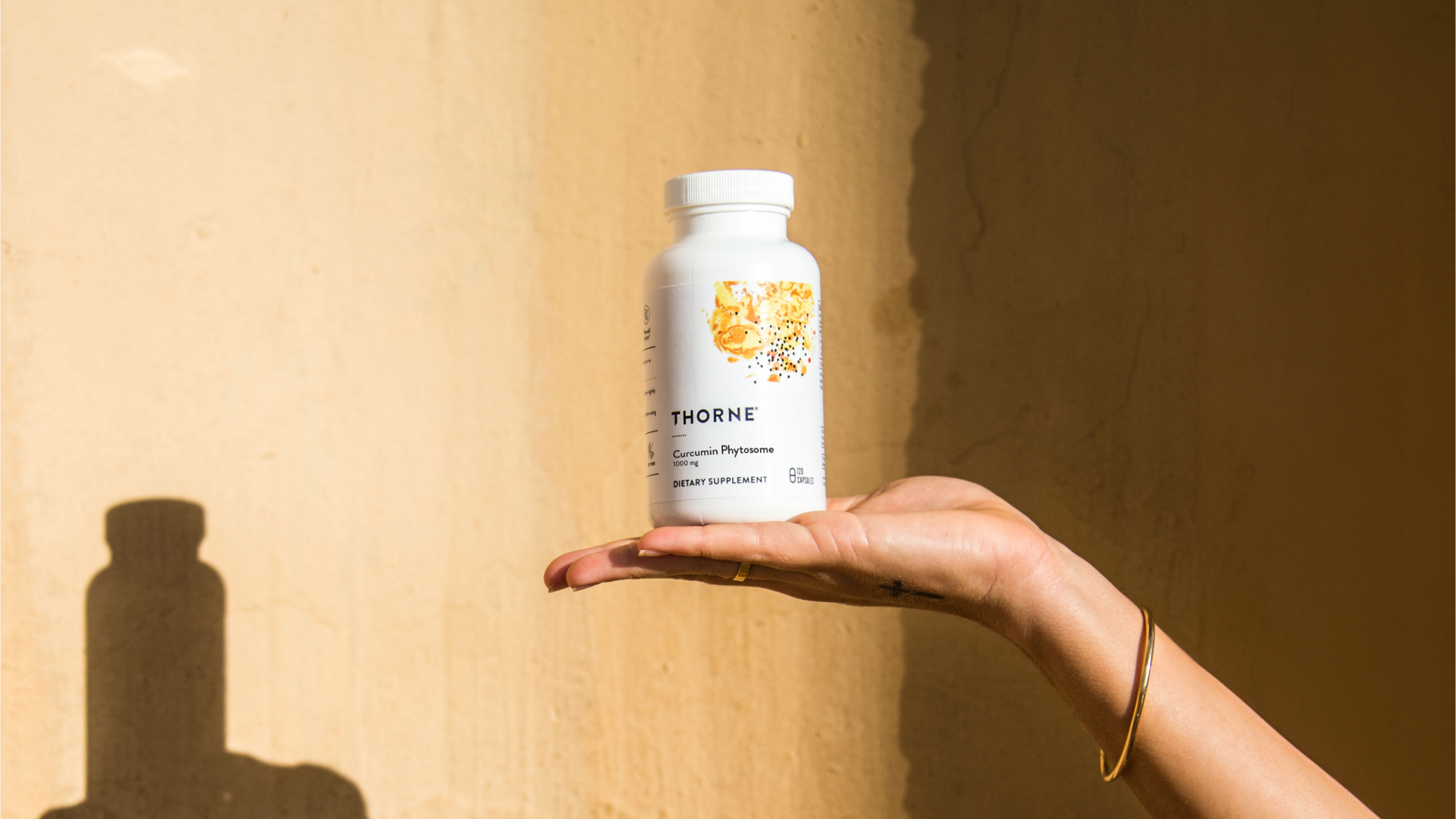People take supplements to improve or optimize their health. So what happens when you look at the label, and the ingredient list is filled with unrecognizable additives?
When we think of our hair, we often think of it as an accessory – something that can be straightened, curled, and cut to fit with the latest trends and our own personal taste. Although it’s common knowledge that our hair can make us feel confident, and drastic hair changes can indicate a major life change, hair discourse often reduces it to a mere fashion statement rather than a reflection of our health.
As such, we often turn to a favorite celebrity who has a sponsorship with a beauty company, or a magazine that claims to offer little-known hair secrets when we’re searching for healthy hair products. But there’s actually much more to your locks than meets the eye. We’re going to look at how to get healthy hair, and it all starts at the root.
But before we dig into how to make your hair healthy – how to have healthy hair – let’s review what your hair is made of.

The science behind your strands
What is hair made of? Your hair is mostly made up of a strong type of protein called keratin. Sound familiar? That’s because your skin and nails are also made of keratin.
Think of your hair like a tree – hair growth occurs from deep within. The hair root grows up through your skin layers – the dermis and epidermis – until it reaches the surface.
Although the hair you see on your body is technically dead, it’s alive and well deep within the hair bulb. There, new hair cells get nutrients from nearby blood vessels. Over time, these cells group together and harden. Very slowly, they push through the skin in one long chain as the process continues with new cells.1
Your hair follicles are connected to microscopic sebaceous glands. You might have heard of sebaceous glands if you have or have ever had oily hair or acne. Sebaceous glands produce sebum, a substance that protects your hair and skin while keeping it moisturized. However, the role of sebum is not fully understood by dermatologists.2
Now that you have a base understanding of how hair grows, check out these tips for healthy hair.
Three tips for how to get healthy hair
1. Eat a balanced diet – You’ve heard it before, and you’ll hear it again: You are what you eat. To function at your best, your body needs the necessary nutrients to fulfil its everyday functions, both big and small. Your hair is no different.
If you want to know how to get healthy hair, then this is one of the most important (and arguably easiest) changes you can make. Research shows that deficiencies in protein, iron, and biotin can lead to hair loss.3
In a 2018 meta-analysis published in Dermatology and Therapy, experts analyzed 125 clinical studies by looking at how different vitamins and minerals interact with non-scarring alopecia (baldness).4
Although the authors acknowledged that a relationship between vitamin D and hair conditions warrants further study, they wrote that, “Most authors agree in supplementing vitamin D in patients with hair loss and vitamin D deficiency.”4
Although other nutrients can play a role in hair loss conditions, further research is needed in individuals with and without vitamin deficiencies, experts say.3,4
Some foods that might promote hair growth include:
- Beans
- Fish
- Eggs
- Nuts
- Spinach
- Green Tea
2. Add a nutritional supplement to your routine – If you Google phrases like “how to make your hair strong,” or “how to get healthy hair naturally,” then chances are you’ve stumbled onto information suggesting several different nutritional supplements. Here are some Thorne supplements you could consider adding to your routine:
Biotin: Also known as vitamin B7, biotin is a B vitamin. Like all B vitamins, the body can’t naturally make biotin on its own. Your gut bacteria can produce it, and you can also get biotin through diet and supplements. However, because biotin is water-soluble, meaning it can dissolve in water, it doesn’t stick around in the body for long.
Biotin supports many functions in the body – and although most individuals get the recommended daily amount of biotin, certain groups, such as pregnant women or individuals with health conditions that affect nutrient absorption, can be at risk for a deficiency.
Both hair loss and scaly skin can be symptoms associated with a biotin deficiency, which is why it’s important to get the recommended amount through diet or supplementation to support healthy skin, nails, and hair.
Note: Research indicates that biotin can interfere with the results of some laboratory tests. If you are supplementing with biotin, then be sure to talk to your healthcare practitioner prior to having your blood drawn to know if biotin should be avoided prior to the test.
Green Tea Phytosome: As you were reading the list of foods above, you might have wondered why green tea made the list. Several studies indicate that green tea extract benefits hair health.
In a 2019 overview of botanical alternatives for hair loss conditions, experts said a polyphenol called epigallocatechin gallate (EGCG), a constituent of green tea, is “reported to inhibit 5-alpha-reductase enzyme.” 5 This is the enzyme that converts testosterone to the hormone dihydrotestosterone (DHT), which, when in excess, is linked to hair loss.6
If you’re noticing changes in your hair, then keep in mind that your sex hormones impact your hair cycle. Excess hair growth, irregular hair distribution, and hair loss can be caused by a hormone imbalance in men and women. Changes in hair thickness are also associated with menopause or an overactive thyroid gland.
In a 2022 study published in Health Science Reports, researchers explored the effect of Pycnogenol®, an extract of French maritime pine bark, on hair density in menopausal women.7 The study divided 76 women (ages 45-60) into two groups – 50 mg Pycnogenol or placebo, three times daily, with hair density measurements taken at two months and six months. In the group who took Pycnogenol, the researchers saw significant increases in hair density – 30 percent and 23 percent after two and six months, respectively.7
Collagen: Collagen peptides are rich in the amino acids that nourish hair, skin, and nails.
3. Do your research – If you’re wondering “how to get long hair healthy” or “how to keep long healthy hair,” then you might need to consider your current hair-care routine. What products are you using? What ingredients do they contain? How do they affect your hair? And perhaps most importantly, how are they affecting your health?
For example, although bleach is an effective tool in the hair dying process for anyone who wants lighter hair, bleach weakens hair strength, leading to dry, damaged hair. There are even studies that link certain ingredients in hair products with the development of certain cancers! According to the National Cancer Institute, evidence suggests using certain chemical hair relaxers or straighteners might lead to breast or uterine cancer.8
That’s why it is always best to do your research on the hair products you use. There is lots of information out there – although, unfortunately, not all of it is accurate. The good news is you can approach it from the inside out; not only can diet and supplementation help you grow healthy hair over time, but these habits can also enhance your overall health by supporting other systems and processes within your body.
For additional hair advice, talk to your hairdresser. Because they’ve worked with your hair before, know what your specific goals are, and (let’s be real here) how much effort you’re willing to put into your hair routine, they can provide you with hair-care tips, recommend products, and point you toward useful resources.
If you have a hair condition such as hair loss, alopecia, or hirsutism – or think you might have one – then consider visiting your healthcare professional or a dermatologist.
The takeaway
Now that you have an idea about how to get healthy hair, feel confident by nurturing it from the inside out with the help of supplements.
- What is the structure of hair and how does it grow? National Library of Medicine. https://www.ncbi.nlm.nih.gov/books. [Accessed February 14, 2023.]
- Picardo M, Ottaviani M, Camera E, Mastrofrancesco A. Sebaceous gland lipids. Dermatoendocrinol 2009;1(2):68-71. doi:10.4161/derm.1.2.8472
- Guo EL, Katta R. Diet and hair loss: Effects of nutrient deficiency and supplement use. Dermatol Pract Concept 2017;January:1-10. doi:10.5826/dpc.0701a01
- Almohanna HM, Ahmed AA, Tsatalis JP, Tosti A. The role of vitamins and minerals in hair loss: A review. Dermatol Ther (Heidelb) 2018;9(1):51-70. doi:10.1007/s13555-018-0278-6
- Dhariwala MY, Ravikumar P. An overview of herbal alternatives in androgenetic alopecia. J Cosmet Dermatol February 2019. doi:10.1111/jocd.12930
- Pietta P, Simonetti P, Gardana C, et al. Relationship between rate and extent of catechin absorption and plasma antioxidant status. Biochem Mol Biol Int 1998;46(5):895-903. doi: 10.1080/15216549800204442.
- Cai C, Zeng B, Lin L, et al. An oral French maritime pine bark extract improves hair density in menopausal women: A randomized, placebo‐controlled, double blind intervention study. Health Sci Rep 2022;6(1). doi:10.1002/hsr2.1045
- Hair dyes, other hair products, and cancer risk. National Cancer Institute. https://www.cancer.gov/about-cancer/causes-prevention/risk/substances/hair-dyes-fact-sheet. [Accessed February 16, 2023.]
Share:
Related Posts

DUTCH Test Enhancements
People take supplements to improve or optimize their health. So what happens when you look at the label, and the ingredient list is filled with

Benefits of Doing Nothing: The Default Mode Network
Quicksilver Scientific Education Team April 20, 2024 Beneath the surface of our daily actions lies a stream of spontaneous thoughts, memories, and emotions. Often, we

Thorne Celebrates 40 Years of Good Health
Maggie Chandler April 12, 2024 As it’s often said at Thorne, healthy ageing is a gift. It’s about embracing the way you feel, your experiences,

Healthy Coffee Alternatives: When to Quit Coffee & What to Drink Instead
Dr Thomas Wnorowski February 16, 2024 Key Points: Does the idea of quitting coffee make you feel all sorts of (terrible) things? It’s common. But

How Your Social Network Impacts Your Mental Health
Austin Ruff April 17, 2024 Humans are inherently social creatures. It’s in our nature to connect and want to be connected to the people around


